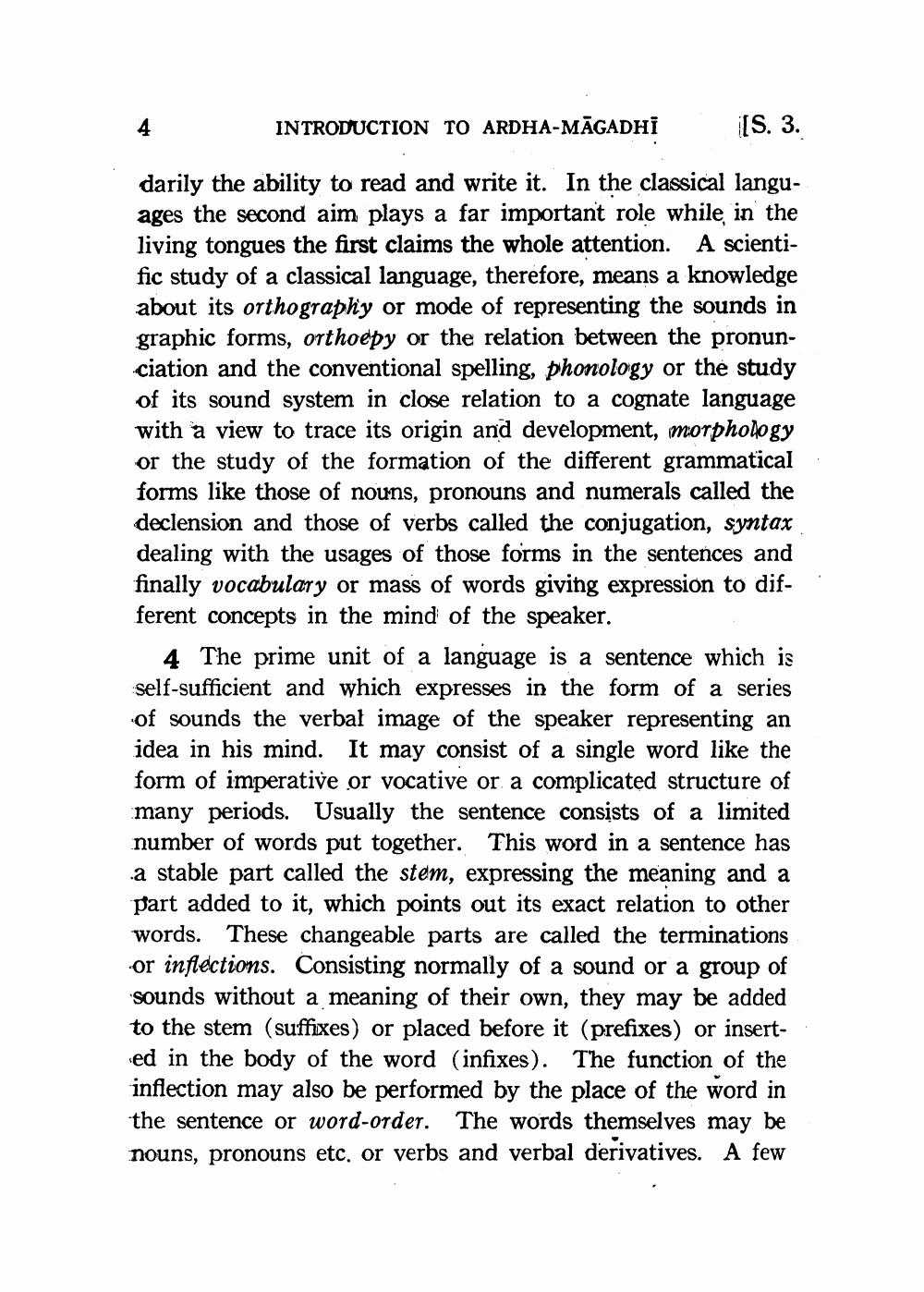________________
INTRODUCTION TO ARDHA-MĀGADHI
IS. 3.
darily the ability to read and write it. In the classical languages the second aim plays a far important role while in the living tongues the first claims the whole attention. A scientific study of a classical language, therefore, means a knowledge about its orthography or mode of representing the sounds in graphic forms, orthoepy or the relation between the pronunciation and the conventional spelling, phonology or the study of its sound system in close relation to a cognate language with a view to trace its origin and development, morphology or the study of the formation of the different grammatical forms like those of nouns, pronouns and numerals called the declension and those of verbs called the conjugation, syntax dealing with the usages of those forms in the sentences and finally vocabulary or mass of words giving expression to different concepts in the mind of the speaker.
4 The prime unit of a language is a sentence which is self-sufficient and which expresses in the form of a series of sounds the verbal image of the speaker representing an idea in his mind. It may consist of a single word like the form of imperative or vocative or a complicated structure of many periods. Usually the sentence consists of a limited number of words put together. This word in a sentence has a stable part called the stem, expressing the meaning and a part added to it, which points out its exact relation to other words. These changeable parts are called the terminations or inflections. Consisting normally of a sound or a group of sounds without a meaning of their own, they may be added to the stem (suffixes) or placed before it (prefixes) or inserted in the body of the word (infixes). The function of the inflection may also be performed by the place of the word in the sentence or word-order. The words themselves may be nouns, pronouns etc. or verbs and verbal derivatives. A few




